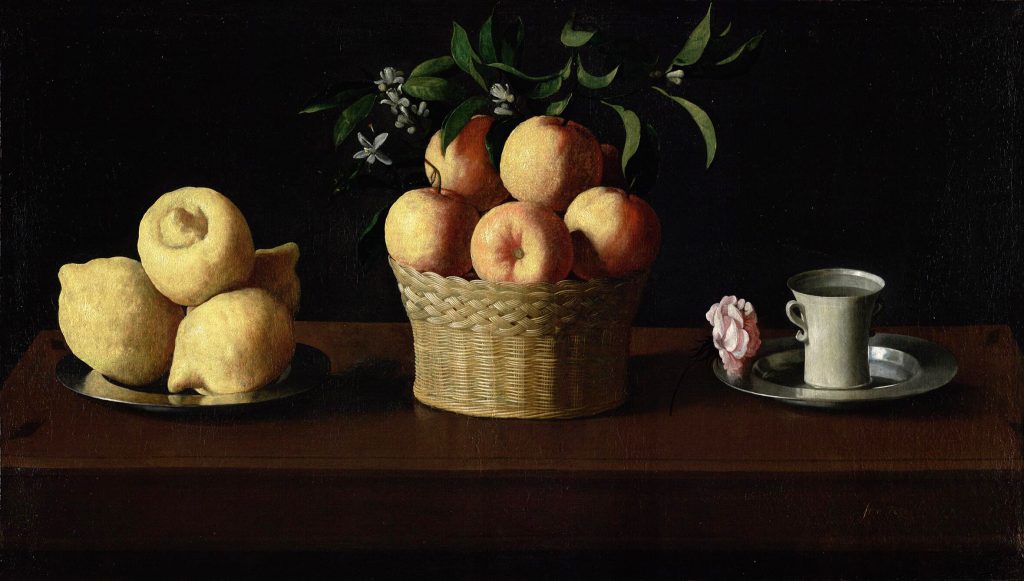The tribulations of the orange
08.20.2018
Francisco de Zurbarán (1598–1664) - Plat avec citrons, panier avec oranges et tasse avec rose (~1633), Norton Simon Foundation, Los Angeles
Here’s a brief history of the orange, this delightful fruit that gave its name to a colour, shines in the sun and shimmers when opened, and the taste of which peps up the taste buds… A long time ago the orange was rare and expensive, now it has become commonplace around the world.
Early citrus fruit came about 20 million years ago in what has become the Malay Archipelago but back then it was part of the Asian and Australian land mass. People in China were growing oranges over 2000 years ago. In India too, the fruit was mentioned in health treaties after the Vedic period that later became holistic Ayurvedic medicine. In Asia, the orange was considered medicinal.
The silk route introduced by the Chinese in their trading initiatives with Syria and Turkey was probably the route taken by bitter oranges on their way to the Arabs who went on to grow them. The Muslim invasion of the Iberian Peninsula and, a few centuries later, Christian crusades to Oriental lands, meant that the orange tree took root in Sicily and around the Mediterranean basin where it thrived and flourished. Oranges then became much sought after in Europe but were very expensive so were eaten by the ruling classes only. This bitter orange was somewhat tart. In France it was dubbed “pume d’orenge”, or apple orange and was used mainly for jam making. And fragrances were made using orange blossom.
In the fifteenth century, Portuguese sailors returned home with sweet oranges from Ceylon (citrus sinensis). They were grown throughout Europe in “orangeries” in castles. It was a rare fruit for the well-heeled. In modern times, the fruit has gradually become available to the average person whilst keeping its distinctive and rare status. Until the Second World War it was a Christmas treat for those with modest incomes, a fruit stared at longingly on shop shelves by kids with hungry eyes, it was a gift within itself. The orange was associated with the magic of Christmas.
Current global production of oranges is about 80 million tons, approximately 800 billion oranges.
The word naranga from Sanskrit to ancient Persian became nerantzion to the Byzantines, then arangium, arantium and aurantium in Latin, then naranja in Spanish, laranha in Portuguese, arancia in Italian, aràngi in Provencal, then orange in French, which gave its name to the city of Orange that turned its production into a roaring trade. However, Arabs called it “bortugal” for some considerable time, in honour of the land whose people had brought the orange to them! But since the 16th century, the word orange has designated a colour.
A king of citrus fruit that is much loved and so delicious, the orange is eaten as it is or used in traditional medicine, in the kitchen or as an ingredient in perfume. It has reached such high status that we are not about to slag it off.

